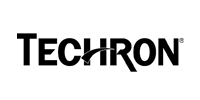Maintaining your cooling system will help protect your equipment


Coolant or antifreeze, as it’s commonly known, is a liquid that serves a simple yet significant role in automotive and industrial applications when it comes to corrosion prevention, freeze and boil protection.
With a number of coolant technologies being present in the market today each distinctly different based on factors like service application and maintenance requirements, automotive coolants play a vital role in the health of your vehicle’s engine.
Automotive coolants are made from three main components, water, glycol and an additive or chemical inhibitor package. The purpose of the liquid is to absorb the heat created by the internal combustion of fuels as it circulates the engine and carries the heat to where it cools when it passes through the radiator.
In a competitive market of ever-changing technologies, OEM requirements and colors, a large number of engine failures can be attributed to issues within the cooling system. So, knowing the do’s and don’ts for maintaining that system correctly will help protect your equipment, increase the reliability rate and avert premature engine failures from occurring.
- ✔ Do use water that meets specifications for top offs and for dilution of concentrates. Water of good quality will maintain fluid properties without adding contaminates to the cooling system.
- ✔ Do select a coolant that has similar corrosion protection inhibitors as it will retain the inhibitor levels for adequate corrosion protection.
- ✔ Do test your engine coolant and observe the fluid regularly during preventive maintenance. If possible, have at least one coolant sample tested by a laboratory to ensure equipment health and fluid properties are adequate. Using the right test package will highlight issues early on before corrosions occurring.
- 🗙 Do not mix any type of water that does not meet specifications with antifreeze as this will cause scaling or deposits on the system components resulting in the loss of heat transfer abilities of the cooling system. Be careful not to mix different coolant corrosion protection formulations as it may cause compatibility issues.
If coolant maintenance is not given a proper priority during routine engine checkups, it may lead to engine problems down the line. That is why if you have any questions or doubts regarding which coolant or antifreeze to use for your vehicle, you can always revert to the OEM manual, consult maintenance professional or contact Caltex support.
As always, Caltex is here to help you select the right products for your unique business needs that will enhance and improve operational efficiencies whenever required.





























